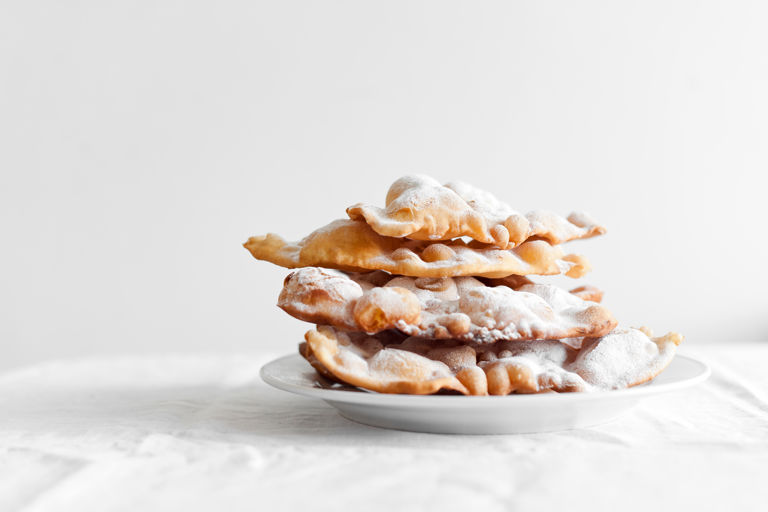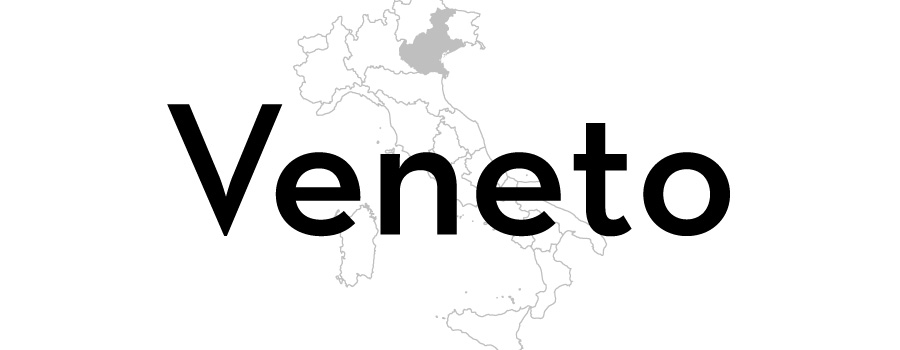Venetian crostoli (galani)
Perfectly crisp, spiked with grappa and dusted with sugar, Valeria's delicate crostoli recipe is the perfect sweet snack for carnival season. If you're heading to Venice carnival this year, check out Valeria's guide to Venice's best pastry shops so you can stock up on snacks while you're there.
The big Venetian Carnival fry-up wouldn’t be complete without a tray of crostoli or galani. These paper-thin fried sheets of sweetened dough are as bound to this yearly recurrence as the rest of the traditional sweets (frìtole and favette). Perhaps even more, actually, since their origin – which dates back to the Roman Empire – is as old as Carnival itself.
The concept is not a Venetian prerogative. In fact, it’s declined all over Italy, just under different names. During Carnival, then, you’ll find cenci in Tuscany, frappe in Central Italy, bugie in Piedmont, chiacchiere in Lombardy and so on. Ingredients vary slightly, as do shapes, but all in all, similarities outnumber any differences.
In Veneto, crostoli and galani share the same recipe, but are geographically divided by a strip of water – the Venetian lagoon – and have, throughout the centuries, developed into slightly different versions. Crostoli are typical of the Venetian inland. They are often cut into rectangles that are thin and yet substantial. Galani, on the other hand, belong to the city of Venice alone. They are rolled so thin that they are almost see-through, then cut into long, twisted ribbons that are as light and friable as they are fragile.
Being a Venetian of the inland myself, I grew up eating crostoli rather than galani. My nonna was the one in charge of making them. She would roll the dough with a huge rolling pin – the same she’d use for tagliatelle – then cut it with a wheel into many, many little rectangles. The final result was a stash of crumbly, sugary crostoli for the entire family to partake.
Now that she’s in her mid-nineties, she handed the task and the recipe over to me. Unlike her, though, I take shortcuts. I use a pasta machine to roll the dough as thinly as possible, then cut it into rough strips. I like my crostoli imperfect, irregular, a bit clumsy – the flavour doesn’t change but they are quicker to make. If you want them neat, however, use a pastry wheel to cut them straight and give them some pretty frilly edges. They will hardly look more festive than that.
Ingredients
Metric
Imperial
Crostoli
- 500g of plain flour, sifted, plus more for rolling the dough
- 3 eggs, plus 2 egg yolks
- 80g of caster sugar
- 1 pinch of sea salt
- 1 unwaxed lemon, zested
- 30g of unsalted butter, melted
- 45ml of grappa, or rum
- sunflower oil, for frying
- icing sugar, for dusting
Method
Get in touch
Please sign in or register to send a comment to Great British Chefs.




